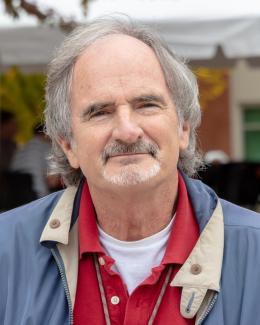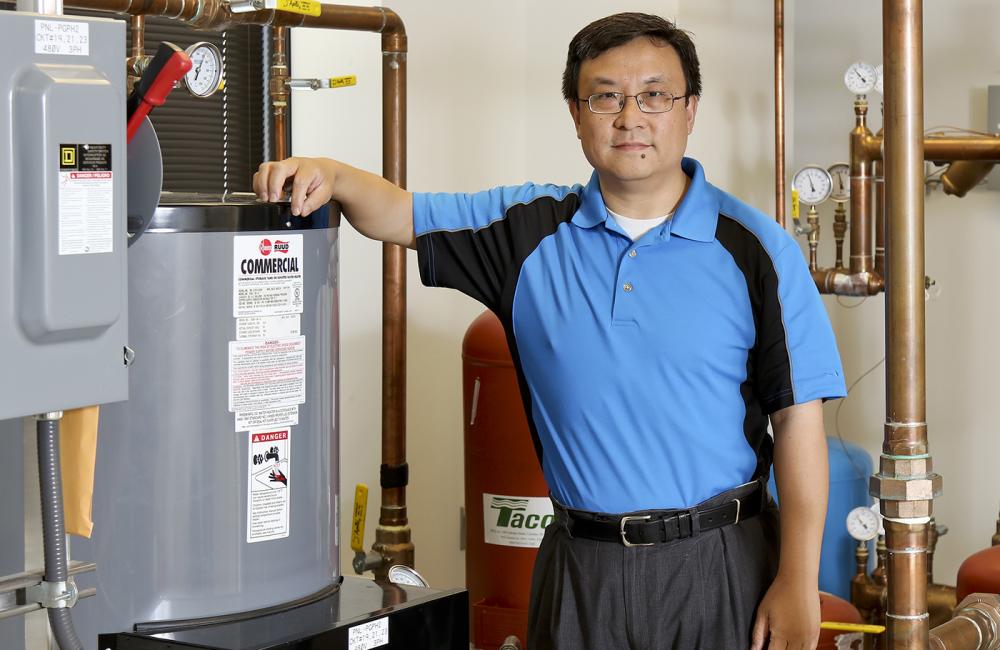October 5, 2016 – As a boy growing up in China, Xiaobing Liu knew all about Oak Ridge and the World War II Manhattan Project. He had no idea that he would one day work at DOE’s Oak Ridge National Laboratory, the Secret City’s successor.
Liu is a lead researcher in geothermal heat pump (GHP) technology, developing software and smart controls and performing characterization and modeling for GHPs in both component and system levels. Accessing energy stored in the Earth’s crust to heat and cool buildings is a no-brainer to Liu. His years of research have made him confident, if not passionate, about using GHP as a viable option to clean and renewable energy.
“Living in China, I saw how people made homes in the sides of hills—they’re called Yao Dong— and the temperature inside was always comfortable, both in summer and winter,” said Liu. “Visiting my grandpa at age six, I was aware of the comfort in these cave-like structures compared to the outside temperatures.”
Perhaps his early exposure to these Chinese abodes is what fueled his drive to tackle geothermal energy in his career, so much so that his division director introduces him as the “evangelist of geothermal heat pumps.”
After receiving his bachelor’s and master’s degrees in mechanical engineering at Tongji University in Shanghai, Liu came to the U.S. for his Ph.D. at Oklahoma State University, which is the epicenter of GHP technology. After earning his Ph.D., Liu went to work as the system engineering manager at ClimateMaster, which at the time, was the largest GHP manufacturer in North America. At ClimateMaster, Liu developed software used in designing, analyzing, and optimizing GHP systems. The software is still in wide use today. He also helped design more than 30 GHP systems in the United States and other countries.
In 2009, Liu joined the ORNL Building Technologies Research and Integration Center.
“It was a difficult decision for me but very hard to refuse,” said Liu. “I had admired and respected the scientists at ORNL for a long time and was familiar with their work.” His boyhood knowledge of Oak Ridge’s history also enticed him to the laboratory.
Liu was the technical lead of building equipment research in the US-China Clean Energy Research Center for Building Energy Efficiency (CERC BEE), a partnership that was just renewed for another five years. He also serves as the research chair for the International Ground Source Heat Pump Association (IGSHPA), and the research chair for the TC 6.8 Geothermal Heat Pump and Energy Recovery Applications technical committee of the American Society of Heating, Refrigeration & Air-Conditioning Engineers (ASHRAE).
What would Liu like to see in GHP development if given more opportunities?
“First, invest R&D in ground heat exchanger designs, installation, and drillings. If we can send people to the moon, we can make drilling cheap,” he says. “Geothermal systems need to be cheap and reliable.”
Second, enable wider adoption of the GHP technology. Liu said people need to be able to easily and accurately measure the energy savings they achieve when using GHP.
And third, Liu says the industry needs software tools and cost effective systems for performance monitoring, as well as real-time diagnosis and optimization, to ensure GHP systems are running at optimal performance at all times.
Liu makes a strong statement for conditioning buildings with GHP technology with one simple comparison. “We use a flame that burns at approximately 3,000°F to heat our homes when we only need 76 – 80°F. Why do we do that?”
ORNL is managed by UT-Battelle for the Department of Energy's Office of Science, the single largest supporter of basic research in the physical sciences in the United States. DOE’s Office of Science is working to address some of the most pressing challenges of our time. For more information, please visit energy.gov/science. — By Marlene Taylor




